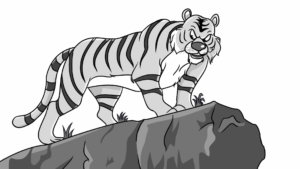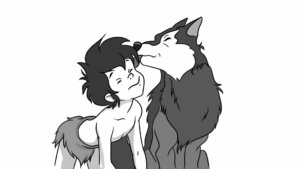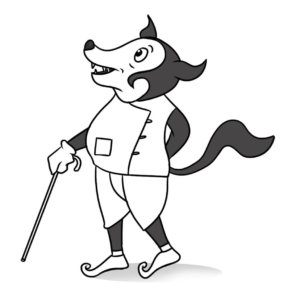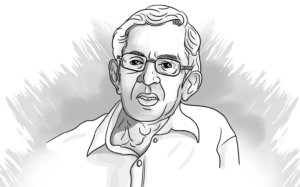STEP BY STEP PROCESS.
Hey guys!
Welcome to The Animad World, your one-stop destination for Indian Animation. Myself Nitin Navale and I work as Creative -Head for your beloved educational series “Dr. Binocs Show.” Yes, it’s my job to ensure that the workflow is smooth and our lovely audiences get the weekly dose of their favorite show.
Every day we receive so many emails from you all, thanking us for bringing this show and how it has helped you all in your studies. But another commonality we have witnessed in your emails is that you want to know “HOW WE CREATE IT?”
So I thought, let me take you into this fantastic world of Dr.Binocs and reveal to you the mechanism behind it. Hopefully, it will inspire many of you to become an animator or content creators.
But, before we move forward, let me inform you that this is just a basic summary. In the upcoming articles, I’ll give you the detailed groundwork behind it. If possible, I will also introduce the artists working behind it.
Yes, so do make sure to subscribe by filling the form below, if you don’t want to miss the creative process of your beloved show and learn about the Art of Animation.
Now, let’s ZOOM IN! and look at the first step, and that is:
1) IDEA:
Yes, the first important step in making a Dr.Binocs episode is to develop an idea for the topic. And the inspiration could come from anywhere, by observing things around us, knowing what’s trending, and taking your suggestions through emails.
For example, during such a brainstorming session, one of our co-workers farted. Sure, we laughed our guts out, but it did inspire us to make a video on “Why do we Fart?” You can check the same by clicking on the link.
So basically, the trick is to observe keenly, learn from others, read a lot, and who knows, you might end up creating the next viral video. And once we decide on the topic, we move to the next crucial step.
2) THE RESEARCH:
In this process, we go ahead and do tons of research on the selected topic to write the episode’s script. Research is a critical aspect of the whole process because we have to ensure that the information is correct and according to academic standards.
And once it’s done, we move to our next stage of laying this accumulated information on paper or Ms. Word to write the script.
3) THE SCRIPT AND VISUALIZATION:
As they say, ideas are worthless unless you execute them. And here starts the execution process of the production. A typical Dr.binocs script looks way different than the standard industry format.
The image below is an example of how our scripts look.

We divide it into two sections: In the first section, we write the narration and explain the subject. And in the other section, we write the visuals and action needed for that particular line or sequence.
This is where your imagination skills come in handy. You need to take an ordinary line and convert it into an appealing scene that is easy to understand and entertaining to watch. This is where all the fun elements are planned and added to the script, right from your starting intro to your “Nevermind” gags.
And most importantly, it also serves as guidelines for our next step.
4) THE STORYBOARDING:
And what is it? It is a sequence of sketches that map out the scenes planned for the video. In simple words, it is a blueprint for animators to understand how the Animation will come across and the path they need to follow. Whatever plan was laid on the script, the Story boarding artist goes ahead and makes a step-by-step layout of the visuals.
For example, if the script says that Dr. Binocs and Kitty are flying in the shuttle towards the moon. The SB artist will make few frames of this scene that look like this.

Just like that, we create the key drawings of the entire episode while, on the other hand, the artists start to work on the other elements needed for the episode.
5) CHARACTER AND BACKGROUND DESIGN:
In this process, our gifted designers illustrate the puppets, props, and environments needed for the particular episode. Even for this, the artist needs to have excellent visual skills to execute the designs.

We have to make sure that the characters are appealing and aligned with the theme of the show. By theme, what we mean is the style and look and feel of the show. If you go and see some of the random episodes of Dr. Binocs show. You will notice that in every season, the secondary characters look different.
And while they are busy creating those assets, we, on the other hand, are busy recording the vital step, that is…
6)THE VOICE OVER:
Yes, the soul of Dr.Binocs is in his voice. Here, the Voice Over artist comes to our studio and reads the script. Which is recorded by our sound engineer, who later trims it down and polishes it in editing software.
And once the V.O and asset designs are ready, we send them to the most crucial step, i.e.,
7) THE ANIMATION:
Yes, here, our skilled team of animators put life on those inanimate puppets in software called Adobe Flash, now knows as Animate.
And how do they do it? Well, I’ll try to cover it in detail in the upcoming articles. The animation is a time-consuming process that takes lots of effort, and patience is one crucial factor all artists need to have. So make sure to subscribe by filling the form below.
Once we are done with the Animation, we send those files to our editors for the following process.
8) THE COMPILATION
In this step, our Editor put all those scenes together and add text to them to send it forward in the pipeline for adding music.
9) THE MUSIC:
Here, our sound engineers and composers add those background music and effect and remove any unwanted noises in the video before sending us back for…
10) THE FINAL EDITING:
In this final step, our VFX artists and Editors give the final touch to the video. So that it is ready to be uploaded on YouTube to be seen by millions of Dr.Binocs cutsie wootise family members like you, who adore the show so much, which motivates us to keep making the videos.
So here we go, my friends, that’s how we make the Dr.binocs show, wait, are we missing something, oh yes.
TRIVIA TIME!
“Did you know, the voice behind Dr.Binocs also gives voice to Mr.Bean’s Indian version?”
So, hope you enjoyed reading the blog, guys, and remember a lot of great new information on your favorite shows and Indian Animation is coming soon.
And this blog is for animation fans just like you, so make sure to subscribe by filling the form below, write your opinion in the comment section below, and share it with as many people as you can.
Until next time, it’s me, Nitin Navale, Zooming Out,
“STAY ANIMATED, STAY MOTIVATED!”
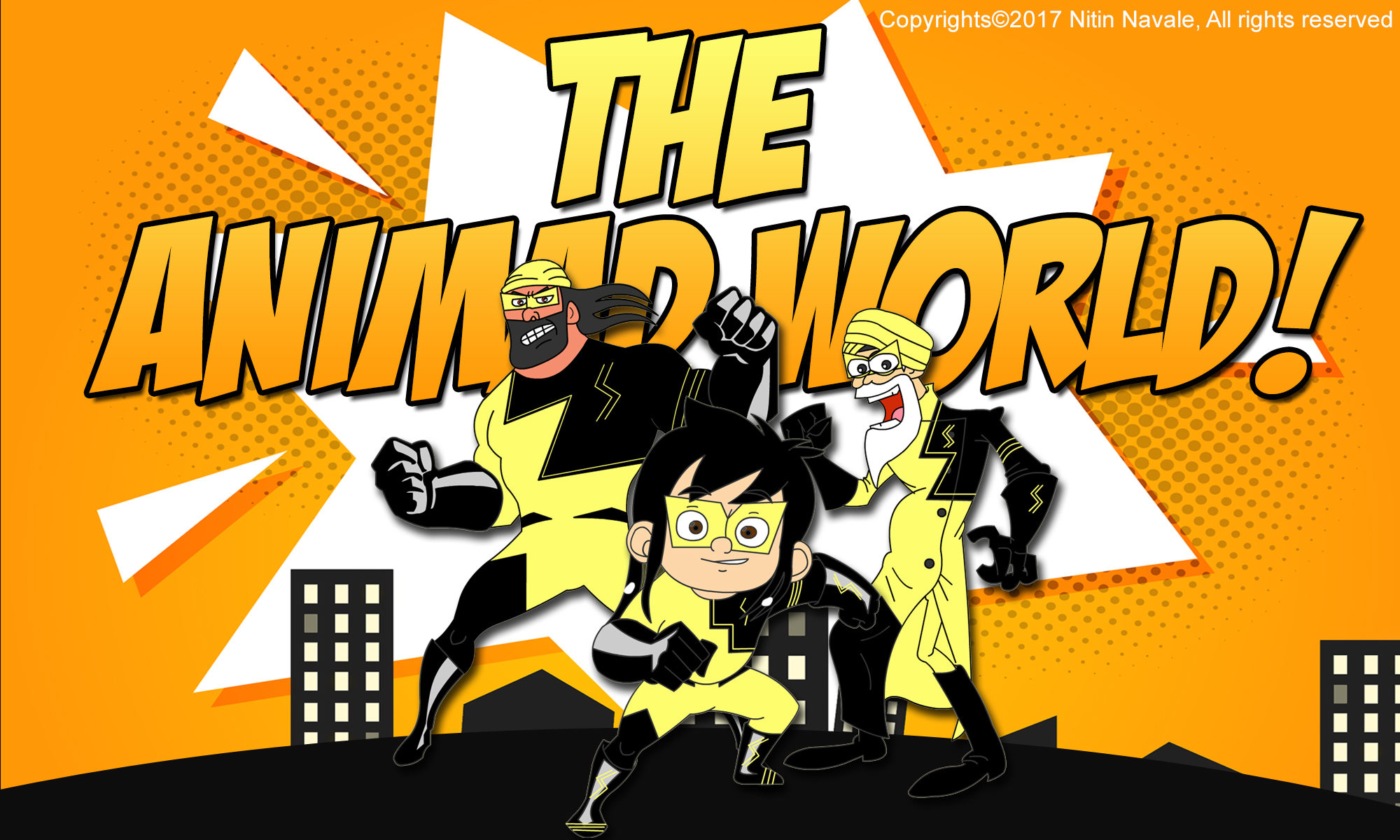



 •1) Change the field: –
•1) Change the field: –  •2) Keep patients: –
•2) Keep patients: –  •3) Be the change: –
•3) Be the change: – 

 Adapted from Rudyard Kipling’s book and directed by Fumio Kuroka
Adapted from Rudyard Kipling’s book and directed by Fumio Kuroka

